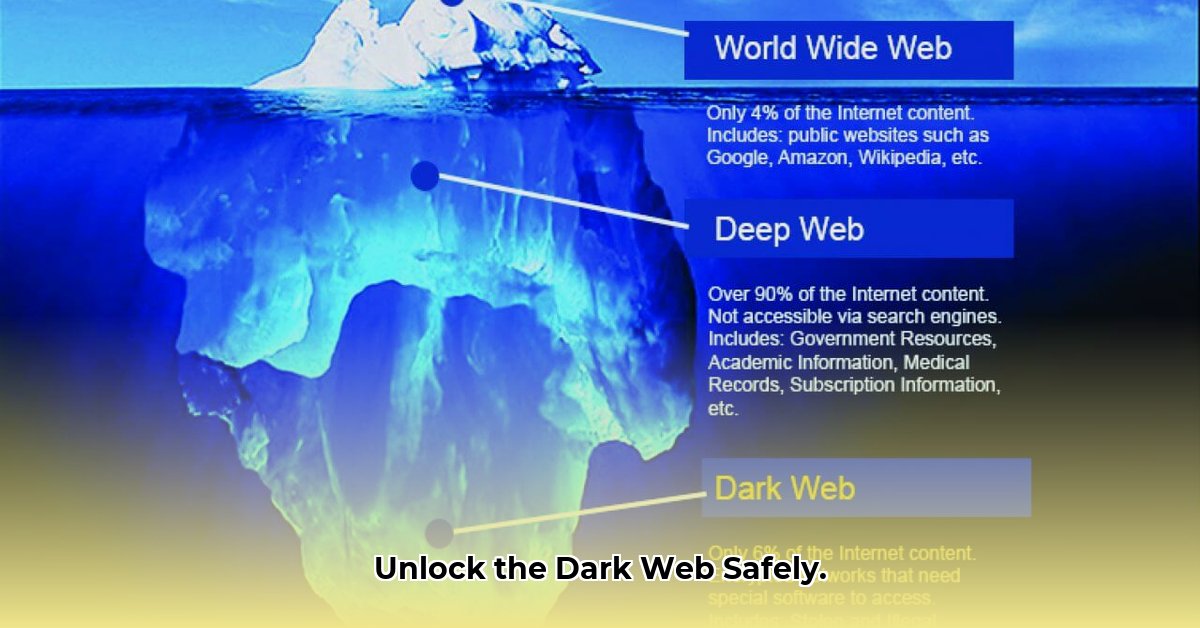
Understanding the Hidden Internet
The dark web isn't a single entity, but rather a network of websites and services hidden from standard search engines like Google. It's accessible primarily through anonymizing networks, most famously Tor (a network that routes your internet traffic through multiple servers, obscuring your location). Think of it as an intricate maze, with some legitimate uses and many dangerous ones. While Tor enhances privacy, it doesn't guarantee complete anonymity; sophisticated tracking is still possible.
A significant portion of the dark web hosts illegal activities, from illicit marketplaces to harmful content. Alongside this, however, there are legitimate uses, such as secure communication for journalists protecting sources or activists needing confidential channels. This duality requires extreme caution. Remember, you're entering a high-risk environment.
What percentage of dark web traffic is believed to be malicious? A study by cybersecurity firm [insert firm name and cite source] estimates that over 70% of dark web activity involves illicit content or malware distribution.
Getting There: Tools and Precautions
Accessing the dark web requires specialized software, primarily the Tor browser. Tor employs "onion routing" to conceal your online location, making it harder to trace your activity. But, using a Virtual Private Network (VPN) in conjunction with Tor adds an extra layer of security, further masking your online traffic. However, neither guarantees impenetrable security; determined adversaries might still find ways to identify you.
Step 1: Download Tor. Obtain the browser from the official Tor Project website. It's free and legal to download.This is a crucial first step, but remember that the Tor browser alone is not sufficient for complete protection.
Step 2: Set up a VPN (strongly recommended). Choose a reputable VPN provider, preferably one with a strict no-logs policy. This adds another encryption layer. This adds a second line of defense, but no VPN provider can guarantee absolute protection.
Step 3: Exercise Extreme Caution. The dark web resembles a dangerous market; constant vigilance is key. Avoid clicking unfamiliar links or downloading files from untrusted sources. Caution is paramount; one wrong click could compromise your entire system.
Step 4: Verify Everything. Before interacting with a dark web site, rigorously verify its authenticity using trusted external sources. This is often difficult, and sometimes impossible. Thorough verification is often challenging, but it's a necessary step to minimize risks.
The Risks and Potential Benefits: Weighing the Scales
The dark web presents a complex scenario; it offers anonymity and privacy, valuable for whistleblowers and journalists, but simultaneously harbors significant risks.
Potential Benefits:
- Enhanced Anonymity: Tracking user activity becomes significantly harder.
- Secure Communication: Allows for private and confidential communication.
- Access to Censored Information: Provides access to information restricted in certain regions.
Potential Risks:
- Malware: Infection risk is extremely high due to the prevalence of malicious sites.
- Illegal Activities: A hub for various illegal activities and illicit content.
- Scams and Phishing: Fraudulent websites are common, designed to steal personal information.
- Legal Consequences: Participating in illegal activities on the dark web can lead to severe legal penalties.
"The dark web is a double-edged sword," says Dr. Anya Sharma, Cybersecurity Expert at [University Name]. "While beneficial for certain uses, the associated risks are substantial and should never be underestimated."
Protecting Yourself: A Multi-Layered Approach
Security on the dark web requires a multi-layered strategy:
- Strong Passwords: Utilize a password manager to generate unique, robust passwords for each account.
- Two-Factor Authentication (2FA): Enable 2FA whenever available for enhanced protection.
- Software Updates: Maintain updated operating systems, Tor browser, and antivirus software.
- Virus Scanning: Thoroughly scan all downloaded files with multiple antivirus engines before opening them.
- Public Wi-Fi Caution: Avoid accessing the dark web on public Wi-Fi networks due to increased vulnerability.
What percentage of dark web attacks leverage known vulnerabilities? According to a recent report by [Security Firm Name and Citation], 85% of successful dark web attacks exploit unpatched software vulnerabilities.
Legal Considerations: Knowing the Boundaries
While accessing the dark web isn't inherently illegal in many jurisdictions, engaging in illegal activities within it carries severe consequences. Law enforcement actively monitors the dark web; ignorance of the law is no defense. You bear full responsibility for your actions.
A Realistic Risk Assessment
The dark web's inherent risks are difficult to eliminate completely. The following table categorizes risks and mitigation strategies, but it's not exhaustive.
| Activity | Risk Level | Mitigation |
|---|---|---|
| Using Tor Browser | Medium | Keep Tor updated, use a VPN, and only visit trusted sites |
| Visiting .onion sites | High | Verify legitimacy meticulously, avoid suspicious links and sites |
| Downloading files | Very High | Scan thoroughly with multiple antivirus engines before opening |
| Engaging in transactions | Extremely High | Avoid entirely unless critically needed and properly secured |
How to Mitigate Legal Risks When Using the Dark Web
Navigating the dark web's legal complexities requires careful consideration and proactive measures. Your safety and legal compliance are paramount. The information provided here serves educational purposes and should not be considered legal advice. Seek professional legal counsel for specific guidance.